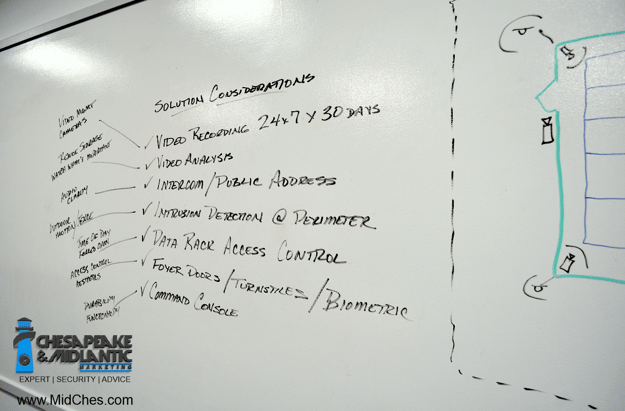
As reported in The Construction Specifier by Ray Coulombe, CSI, CDT

"Those who may have rejected MasterFormat in their designs because the Electronic Safety and Security categories had become less usable, should revisit—the makeover has been substantial."
"A significant number of modifications were made in 28 05 00−Common Work Results for Electronic Safety and Security. While there is much additional detail contained under the areas described in the following paragraphs, the net effects are to fill in a number of holes, eliminate redundancies, and provide the system specifier more flexibility when dealing with various application-specific electronic safety and security systems," say Coulombe.
Sections impacted by the Division 28 update include:
- Power Sources for Electronic Safety and Security
- Servers, Workstations, and Storage for Electronic Safety and Security
- Communications Equipment for Electronic Safety and Security
- Cybersecurity Requirements for Electronic Safety and Security
- Systems Integration and Interconnection Requirements
- General Requirements for Access Control Systems
- Access Control Software and Database Management
- Access Control System Hardware
- Access Control Hardware Devices
- “Video Surveillance” was formerly included as 28 26 00−Electronic Personal Protection Systems, but is now broken out as its own category
- Video analytics was added under “Video Management Systems,”
- Recording devices are moved under “Storage Appliances in Common Work Results.”
- “Intrusion Detection” is the first major subcategory, segmented into building intrusion detection, area and perimeter intrusion detection, and intrusion detection interfaces. The second subcategory is “Security Monitoring and Control,” which preserves “Electronic Structural Monitoring Systems” and, importantly, adds:
- “Security Operations and Monitoring Center;”
- “Security Monitoring and Control Software;”
- “Security Monitoring and Control Services;”
- “Tracking Systems” (for assets and personnel); and
- “Audio Monitoring.”
- “Life Safety” incorporates the major classifications from the former “Electronic Detection and Alarm” category, and now encompasses “Environmental Sensors,” “Fire Detection and Alarm,” “Electronic Personal Protection,” and “Mass Notification.”
- “Fire Detection and Alarm” has been subdivided into “Detection and Initiation,” “Fire Alarm,” and “Emergency Control Function Interfaces.”
- “Information Management and Presentation,” called by various names, such as physical security information management (PSIM), command and control, and situational awareness.
To see what this means from the manufacturers' perspective, we reached out to Commend Intercom for their feedback regarding the update to Division 28. "The CSI MasterFormat 2016 changes affecting electronic safety and security introduce solutions in the appropriate category. This allows the specifier less room for error," says Brad Anderson, National Sales Manager at Commend Intercom USA. He goes on to say, "For example, it actually uses the word “Intercom” to describe the solution. “Intercom” Entry Systems, Audio “Intercom,” Audio Video “Intercom.” Prior to these changes “Communications” was used to describe everything. This is certainly less ambiguous." Commend keeps the most up to date, Division 28 compliant specifications in a portal for specifiers. You can register for free Commend Intercom and Public Address A&E document access here.
Ray Coulombe, CSI, CDT, is founder and managing director of SecuritySpecifiers. He has more than 30 years of experience in the electronic security industry, and has founded (or been a significant contributor to) eight startup and early-stage companies. In addition to degrees in electrical engineering, management, and information technology, Coulombe holds numerous industry certifications. He is a Life member of Institute of Electrical and Electronics Engineers (IEEE), and is also part of CSI, Tau Beta Pi, and (ASIS). Coulombe is a veteran (captain) of the U.S. Air Force, where he participated in the development of advanced missile systems. He can be reached via e-mail at ray@securityspecifiers.com.







